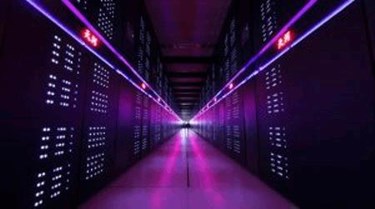A Software Supercomputer? There's A Different Idea!
By Jay Valentine, ContingencySales.com

As more technologists agree traditional IT computing stacks reached end-of-life, there is more interest in delivering a “supercomputer” that can process data and apps thousands of times faster.
Some call this hyper-converged infrastructure. Others talk about quantum computing. These are generally hardware choices offering faster processing with smaller footprints.
It seems few were looking at the radical transformation of the existing software stack as the delivery vehicle for disruptive outcomes.
Let’s define disruptive and then, outcomes.
Disruptive means at a minimum movement of a decimal point or two – or seven. Think 10 times or 100 times or even a million times faster, cheaper, slimmer, less energy.
Outcomes are the currency of change so let’s pick a few most can agree would be a good result:
- Current applications are made to run 1,000 to 1 million times faster
- Storage is reduced by 90 percent
- Data centers shrink 90 percent or more measured by footprint and power consumption
- Apps one expects to take 36 months to build are delivered, in production in a quarter
- Cloud costs reduced by 50 percent - 90 percent
- Oracle, VMware, and other software licenses are not needed
- Overall IT spend reduced by 50 percent while delivering many more new apps per month
- Such outcomes are delivered risk-free, at 1/100th the cost of current technology
Those are attractive outcomes and ones most can agree are not achievable with current technology and would be great if they were.
This is disruption across virtually every aspect of modern compute - not just fast hardware – and from where does it come?
Surprising disruption comes from innovating how large software systems are designed, implemented, and deployed.
A new class of programming – “Systems Oriented Programming” enables these disruptive outcomes.
Systems Oriented Programming innovates simultaneously across:
- Distributed processing
- Database architecture
- Stream processing
- Object-oriented programming
- Micro-services architecture
- Full-stack development (at macro and micro scale)
Engineers trained in Systems Oriented Programming become “full system developers” who, as individual developers, replace scores of engineers in traditional enterprise-class software deployment.
Software systems that once took 18 months to 36 months to build with large teams, can now be delivered in a single business quarter, with a few full system developers, at the fraction of the cost.
One of the larger billing systems in the United States is for a Fortune 10 firm, with over 50 million customers, multiple classes of service, and scores of line items for each customer.
This billing system today runs across a collection of data centers so large that, if you put them together, you need a golf cart to traverse it.
Just the billing system costs over $1 billion yearly to operate.
Yet a larger billing system, processing over twice as many customers and service classes run on this collection of network cables and commodity hardware, in a lab in Austin, Texas – built with, you guessed it, Systems Oriented Programming.
Instead of a billing cycle taking 25 days to compute, it calculates all bills in a couple of minutes.
Instead of needing a golf cart, the distance across the data center is measured with a yardstick.
Instead of paying an army of engineers hundreds of millions of dollars a year to maintain, modify, and build new billing apps, this same work is done with a single engineer.
Instead of burning the electric energy needed to power over 100,000 homes, the power consumption is less than that needed for a Tesla.
Instead of paying Amazon or Microsoft $700 million a year for cloud services in their data centers, the cloud services bill to run this system is close to zero.
Here is an example of what supercomputing can deliver, today.
Saving big money is always an eye-catcher. But hidden in a benefit stack is what you can do with such a technology.
This behemoth billing system now operates without a data center. Think that through for a minute. One of the world’s largest billing systems – no data center. Bills can be delivered, in real-time on a phone or edge device.
A customer can see their bill, for scores of different services, on a phone, the moment they appear.
Supercomputing is the future, but it may not be coming from the corner everyone is watching.
About The Author
Jay Valentine is the CEO of ContingencySales.com, bringing disruptive tech products to market without venture capital and the VP of Sales for portfolio company Cloud-Sliver.
